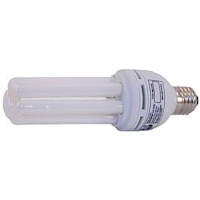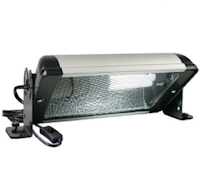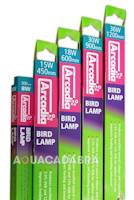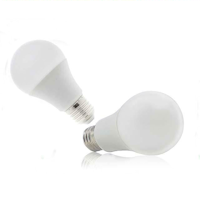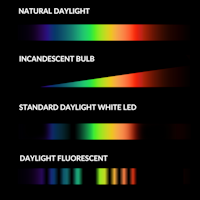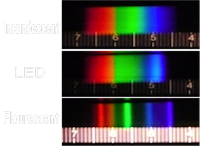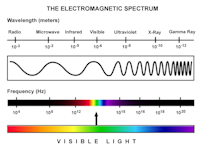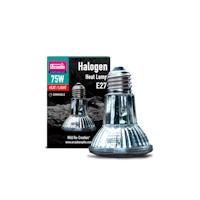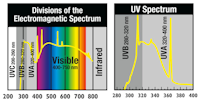Lighting
Introduction
Light is quite a topic of discussion among many groups of finch keepers and quite rightly so because without it life will not function well if at all. To break it down there is the amount of light (duration) given in each day, the strength of light (intensity or lumens), the colour spectrum (infra-red to ultraviolet and everything in-between). All of these above are essential to life and although you may not take much notice of light each day, your body does. Gouldian finches need quite an intense light which is further up the light spectrum and at the end of the day will thrive on the UVB rays which are in the ultraviolet spectrum. The ultraviolet spectrum is not just one type of light, there are 3 types of ultraviolet rays, UVA, UVB AND UVC respectively.
I am not an expert on light, but I do have good knowledge on it, more than enough to write this article. I will not go into unnecessary details on the subject because I do not want to confuse you, if you wish to learn more please feel free to use a web search engine. Abstract from Google: Birds use UVA in the way that they view the world. ... The inclusion of this fourth cone cell allows the bird to see wavelengths of light that humans simply cannot see, i.e. far into red and blue and also into the ultraviolet wavelength. UVA is described as the wavelengths of light ranging between 320 nm and 400nms.
UVB is needed to produce vitamin D in your gouldian finches, this is why you should use supplemental lighting if your gouldian finches are kept indoors. Abstract from Google: To promote vitamin D synthesis and absorption.
Just like humans, birds need vitamin D to aid in nutrient absorption and bio-assimilation. ... As your bird re-grooms his or her feathers coated in oil, she ingests the vitamin D, which will then be converted by the kidneys and liver to active vitamin D3 (cholecalciferol). Vitamin D also helps the body absorb calcium, this is why it is important your birds get the right amount of vitamin D and calcium, so the body can take up the right amount of calcium the body needs.
Calcium in a balanced manner will help with keeping bones, feathers, beak, claws and eggs strong and any reproduction of these especially in hens. I have seen the effects of vitamin D deficiency in many captive bred birds ranging from weakness, always sleeping, poor flight, unable to perch and physical formatives. Eggs laid by hens are often too soft or without shells and some having shells that are so hard that the chicks were unable to break out resulting in dead in shell (D.I.S.). Calcium and vitamin D work closely together, for without either the bird will perish.
The duration of light or the amount of hours of light they receive in a day is vital too because your gouldian finches need rest and sleep. Shorter hours of light in a day over several weeks tells the body that they are not in season for breeding. Towards the spring when the hours of daylight get longer, it triggers their annual moult cycle to shed off the old feathers and grow new ones ready for their approaching breeding season. As the daylight hours get longer, they require less sleep and more daylight hours to feed their growing offspring/chicks. They can not raise offspring with just 8 - 10 hours of daylight, and those that do survive would probably be under weight or suffer with deficiencies.
Supplemental lighting can come in many forms such as, high pressure sodium(HPS), metal halide (MH), incandescent, compact fluorescent lamps (CFL), halogen, light emitting diode (LED), high intensity discharge (HID), this probably covers most types of light bulb types. The choice you make is yours, but you must also remember that not only do you need a UVB but also a bulb that is a natural daylight (mid-spectrum) or white in the colour spectrum. White will usually be between the range of blue, yellow and red. This white light will give the brightness required, and the UVB will produce the much-needed vitamin D at the same time.
The intensity of the light (Brightness measured in Lumens) depends on the wattage or the type of bulb you are using such as LED, the higher the wattage the brighter the light (Lumens or intensity) usually. A 50 watt LED may appear brighter than a 50 watt incandescent or an HPS etc. but it is all about lumens per watt. People seem to be using LEDs more often because they 'appear' brighter, in a way this is true, but I have found the best results are from metal halide, but the downfall with metal halide is that they get rather hot quickly and use a lot of electricity. LED lights usually produce little heat but with limited light but long life. Halogen produce excellent light, get very hot but short lifespan and use a lot of electricity over time. I personally use fluorescent tubes for cheaper electricity bills, cheap to replace the bulbs and easier to get thus getting enough light for my birds. I can buy standard white and UVB fluorescent lights which both have the same fittings and same length 2ft or 24".
Remember that light including UVB rays lose intensity over distance and fluorescent UVB lights are only efficient up to about 12 inches away, so you may want to place a perch under the UVB fluorescent about 10 - 12 inches away.
As the hours of daylight change throughout the year, days become shorter and nights become longer, then days become longer and nights become shorter as we go through the seasons. Whilst the hours of daylight change, you would need to make sure your lights come on as soon as it is daylight and turning them off when the sun goes down. In some parts of the world there are only a few hours of daylight or few hours of darkness, you will need to keep your lights on longer or shorter to make up for loss or gain of light. In winter, it should be about 10 hours of light and summer should be about 14 hours of light. I like to increase the duration of light gradually as the days grow longer and decrease as the days grow shorter to acclimatize the birds. This is the natural way to do it, and their bodies will understand what is happening.
It is a good idea to have lights on a timer and make any adjustments accordingly. Any lights should have a protective guard, so the birds can not burn themselves or scorch feathers. Avoid lights that get too hot to touch, as they can be a fire hazard. Never use any kind of UV lighting for your birds, It must be UVB designed for reptiles or birds. UV light is not the same as UVB and would probably blind or kill your birds or even cause cancers. The best light you could ever possibly give your birds is natural light directly from the sun, but if you are in a hot country where it can get hot to the extreme then I suggest offering a well shaded area and leave a cool bath in the cage but leave half of the cage in the sun.
